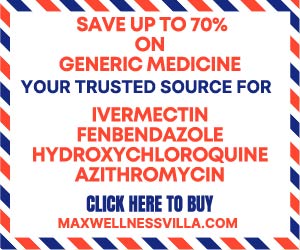
In today’s world, it’s easy to assume that the foods we buy in grocery stores are safe for our families.
However, a top doctor has recently revealed alarming information about three dangerous chemicals commonly found in everyday snacks and pantry staples—chemicals linked to serious health risks, yet still allowed in the U.S. food supply.

BYPASS THE CENSORS
Sign up to get unfiltered news delivered straight to your inbox.
Latest Video
This revelation underscores a troubling reality: Big Food companies and regulatory agencies aren’t looking out for your health, which means it’s up to us to be extra vigilant when choosing what we consume.
Three worst chemicals to look out for on food labels
1. Tartrazine (Yellow Dye No. 5)
The first chemical to be wary of is tartrazine, also known as Yellow Dye No. 5. This artificial colorant is found in everything from snacks and sodas to vitamins, giving foods their bright yellow hue. Tartrazine has been linked to hyperactivity, asthma, and behavioral issues in children.
Despite these known risks, it continues to be used in the U.S., even though many other countries have restricted or banned it due to safety concerns. Europe, for example, requires products containing tartrazine to carry a warning label about potential adverse effects on children’s behavior.
2. BHA (Butylated Hydroxyanisole)
Next is BHA, a preservative used to prevent oils from going rancid in processed foods like chips, cereals, and snacks. While it helps extend shelf life, studies suggest that BHA is a potential carcinogen—meaning it increases the risk of cancer.
Despite these concerns, it remains legal in the U.S., while countries like Japan have banned it entirely. The use of such chemicals raises a critical question: if a substance is considered dangerous enough to be banned in other parts of the world, why is it still allowed in the food we consume daily?
3. Potassium Bromate
Finally, potassium bromate is a chemical used to strengthen dough and improve the texture of bread and other baked goods. Research has shown that potassium bromate is linked to cancer in lab animals, which has led many countries—including Australia, Canada, and those in the European Union—to ban its use in food products.
Yet, in the U.S., potassium bromate can still be found in many store-bought breads and baked goods, putting consumers at risk.
These chemicals are just the tip of the iceberg, highlighting a much larger issue: food companies and regulators are prioritizing profits over public health.

Big Food manufacturers continue to use harmful additives, while regulatory bodies like the FDA allow these chemicals to stay in the market despite evidence of their potential dangers.
This lack of oversight creates an environment where consumers must fend for themselves when it comes to protecting their health.
So, how can you safeguard yourself and your family? The answer lies in vigilance. Here are some steps you can take:
While Big Food and regulatory agencies may not have your best interests at heart, you have the power to protect yourself and your loved ones. The presence of harmful chemicals in everyday foods is a wake-up call for consumers everywhere: don’t take for granted that the food on grocery store shelves is safe. By being vigilant and proactive, you can make choices that prioritize your health and well-being over corporate profits.
Your family’s health is too important to leave in the hands of food giants and regulators who continue to allow harmful substances in the food supply. Always read your labels, stay informed, and remember that a little extra caution today could prevent serious health complications down the road.
Source link


